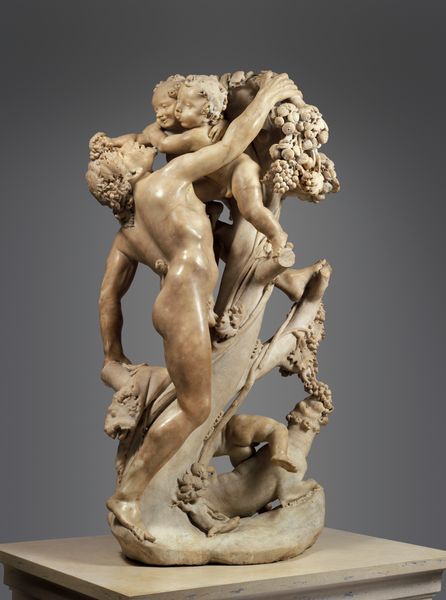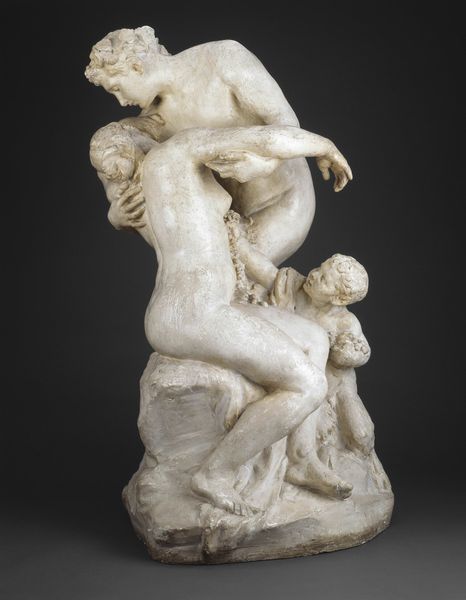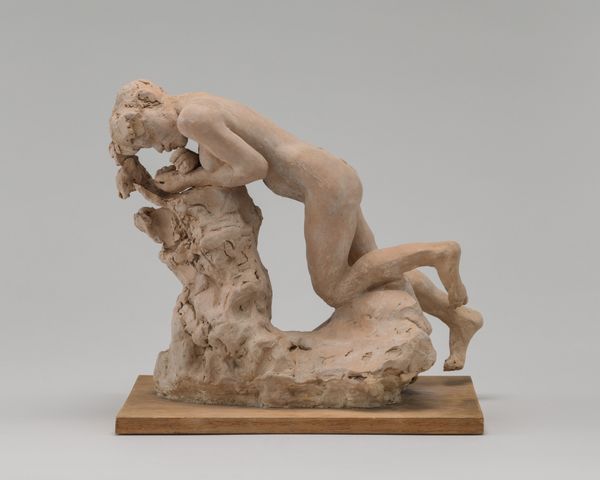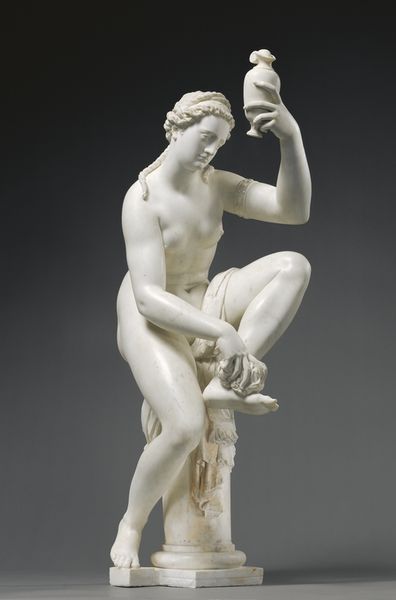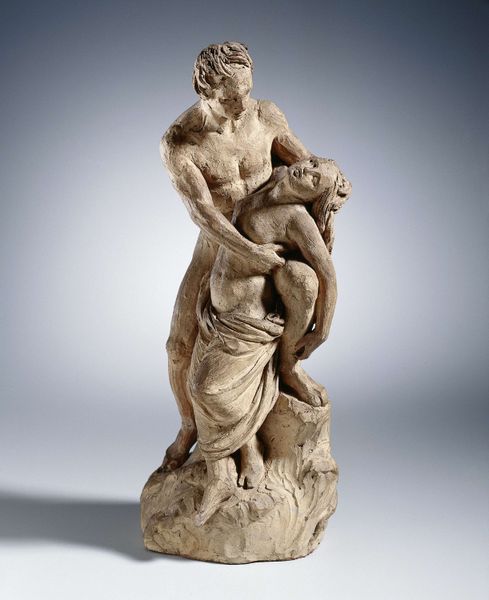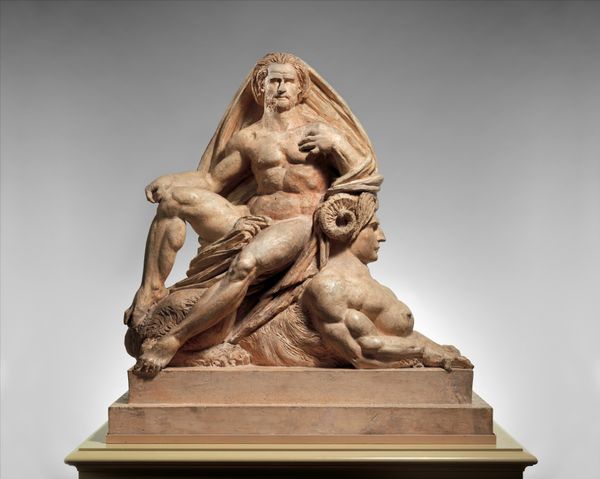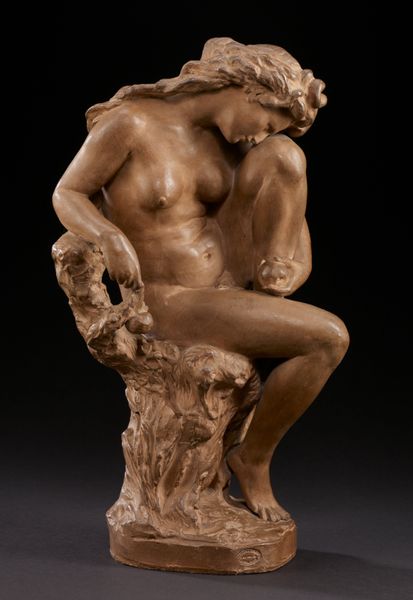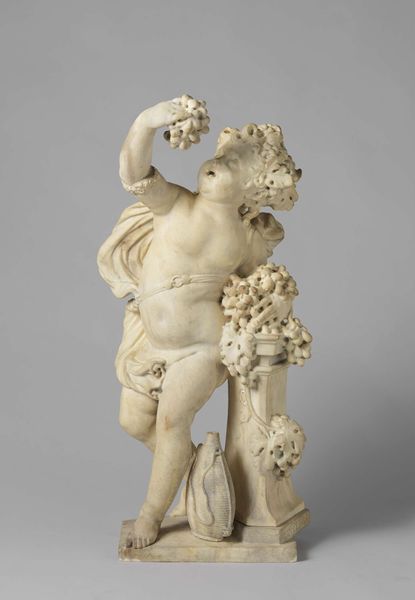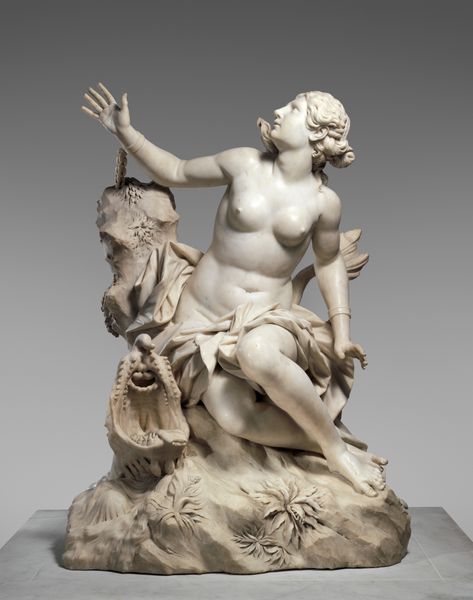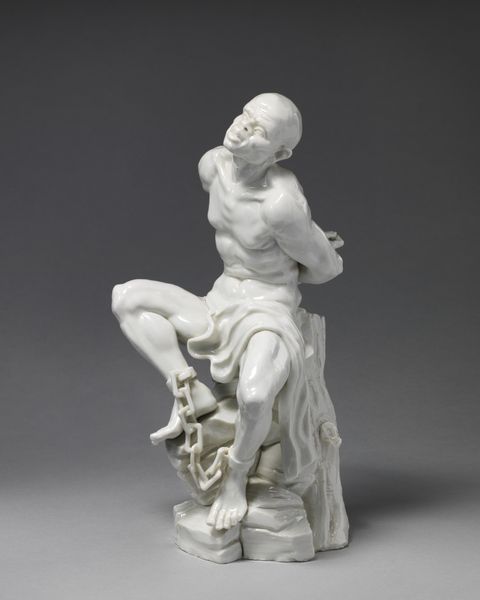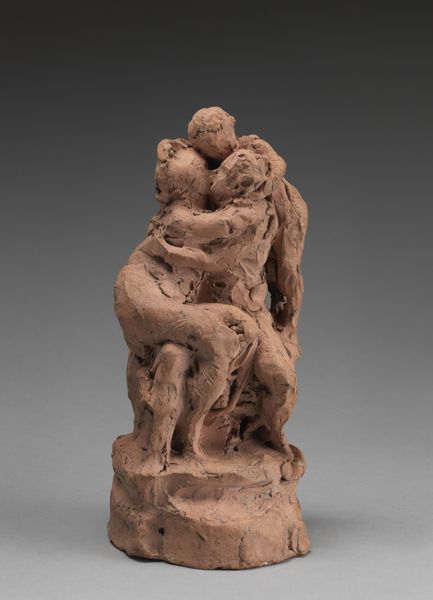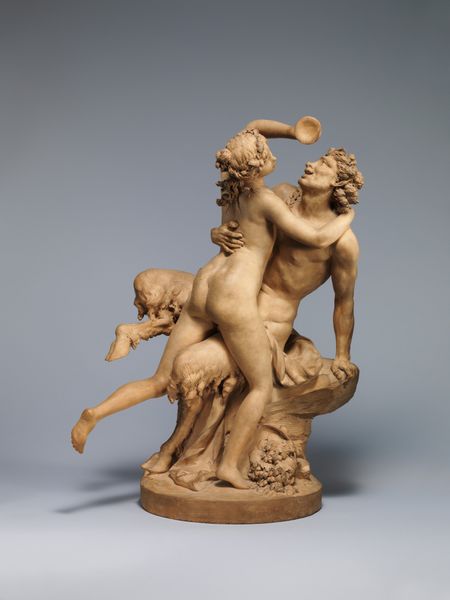
Bacchanal: A Faun Teased by Children 1611 - 1622
0:00
0:00
sculpture, marble
#
allegory
#
baroque
#
sculpture
#
figuration
#
sculpture
#
decorative-art
#
marble
Dimensions: Overall (confirmed): 52 1/8 x 29 x 18 7/8 in. (132.4 x 73.7 x 47.9 cm)
Copyright: Public Domain
Curator: Gian Lorenzo Bernini sculpted this marble piece, titled "Bacchanal: A Faun Teased by Children," sometime between 1616 and 1617. It resides here at the Metropolitan Museum of Art. What strikes you initially? Editor: The way Bernini coaxes such lively texture from cold, hard marble is quite amazing. The curves of the human forms are very sensual, a feeling echoed by the ripeness of the grapes—suggesting abundance and carefree pleasure. Curator: Absolutely. This sculpture was created during Bernini's time under the patronage of Cardinal Scipione Borghese, a period characterized by works filled with dynamic emotion and, shall we say, a joyful pagan spirit, carefully sanctioned by a powerful figure. It definitely speaks to a desire for sensual expression. Editor: We also see how Baroque art intentionally blurs the lines between "high art" sculpture and pure decoration here. Look closely: the rendering of the grape leaves, and the Faun’s hair—it is decorative in purpose, which aligns it with craft more than many would like to admit. Think of all the artisans who worked with marble but were denied the status of "artist." Curator: The Cardinal would never want to lose the perspective, for surely this tells a story of a powerful Cardinal with educated aesthetic tastes; he gets to display moral latitude through his choices. I’d argue this “decorative” approach is how the artwork functioned in society back then. Editor: True. The Cardinal certainly knew how to showcase his worldview. I just want us to also consider the workers whose labor went into realizing the Cardinal’s and Bernini’s visions. And what about the source of the material itself, the marble quarries—what social forces provided access to those sites? Curator: I see what you mean. This one artwork has many dimensions, each revealing another set of values, both in the period and in today's world. Editor: Indeed, by looking at the whole web of creation and social influence we get a clearer view of art as work, as pleasure, as a historical artifact.
Comments
No comments
Be the first to comment and join the conversation on the ultimate creative platform.
